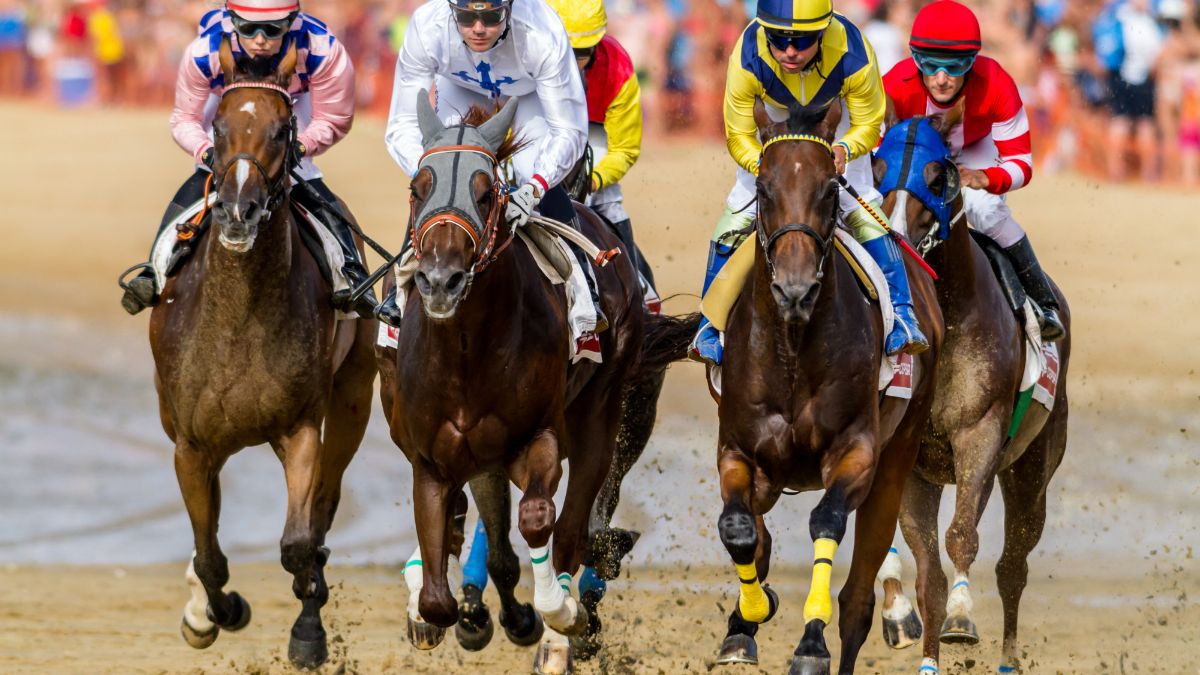
A mere drizzle, not to mention a downpour, can considerably impact outdoor sports events such as cricket or tennis. When it comes to horse racing, however, it’s not such a cut-and-dried affair, as a range of factors must be considered.
Rainfall does not pose a problem in that the turf becomes slippery, as horses have a good grip and generally race in a straight line or on a slight curve. Instead, the issue is what is termed ‘false ground’, which refers to softer patches where water has collected and seeped into the soil.
Jockeys, of course, do not know where these potentially hazardous patches are and they can’t bet on horses to know either. The final word on the surface firmness of a racetrack is the prerogative of the Clerk of the Course, who keeps an eagle eye out for any false ground. If the false ground is detected, a race meet will likely be cancelled as a safety precaution.
How Much Rain is Too Much?
Generally, no set quantity of rainfall is the determining factor in cancelling any horse race. What is important is the effect on the racecourse in terms of flooding or if it becomes waterlogged. It does not take a significant amount of rainfall to produce puddles, which places the spotlight on the soil drainage itself.
Another factor is the elevation of the racecourse, as those located in natural depressions are likely to be more prone to waterlogging. Apart from rainfall itself, a nearby river, for example, can also exacerbate the flooding potential.
Rain Forecasting
Understandably, the time that any rainfall occurs is equally important. It can rain overnight, but with a clear weather forecast for the following day. Ground staff can quickly remove any standing water in these cases, provided there’s not too much. The danger with standing water is mud patches that can mire a horse during a race, potentially very dangerous to both rider and animal.
Therefore, if the forecast is more rain before or during a race event, the prudent option is a cancellation, especially if ground staff cannot prevent the turf from becoming waterlogged.
Of course, rainfall affects the entire area, not just the racecourse itself. A potential scenario is localised flooding that makes it difficult for spectators to reach the racecourse, a cloudburst that suddenly renders all roads treacherous, or even the high wind speeds that often accompany such storms.
Hard or Soft Ground
Before any horse race, the ground is inspected to determine its race readiness. This involves the Clerk of the Course physically walking the track with a Going Stick, a device that measures the racecourse going, meaning the relative softness or hardness of the ground. Seasonal variations must also be accounted for, as the ground is likely to be firmer and drier in summer and more compact in winter.
If the racetrack does not pass muster, the day’s activities are likely to be called off by the Clerk of the Course. Even if the race day proceeds as planned, there is no guarantee that subsequent rainfall may not disrupt racing at any point.
All-Weather Racecourses
Even all-weather racecourses are not entirely resistant to waterlogging following a torrential downpour. These racecourses, however, can withstand average rainfall. Unlike a grass track, an all-weather track often has a Fibresand or Polytrack surface. The latter is a track surface innovation where sand, synthetic fibres and recycled rubber are coated in a microcrystalline wax.
Heavy Going
A racetrack may be deemed ‘heavy going’ after it rains and the ground becomes saturated. Here the turf is likely to be churned up by the horses as they race by, quickly transforming it into treacherous mud. While heavy going is not a sufficient reason to cancel a horse race, there could be more non-runners than usual since trainers and owners might not want to risk their horses in such hazardous conditions.
Protecting Horses and Jockeys
While race organisers are primarily concerned about the welfare of the horses themselves when it comes to a potential cancellation of any horse race, the safety of the jockeys also plays a vital role. Heavy rainfall makes for dangerous conditions as jockeys cannot see what’s happening around them, let alone focus on the race. Therefore, the Clerk of the Course’s main criteria for any race cancellation is whether jockeys or horses are at risk of injury due to inclement weather and its impact on the racecourse.




